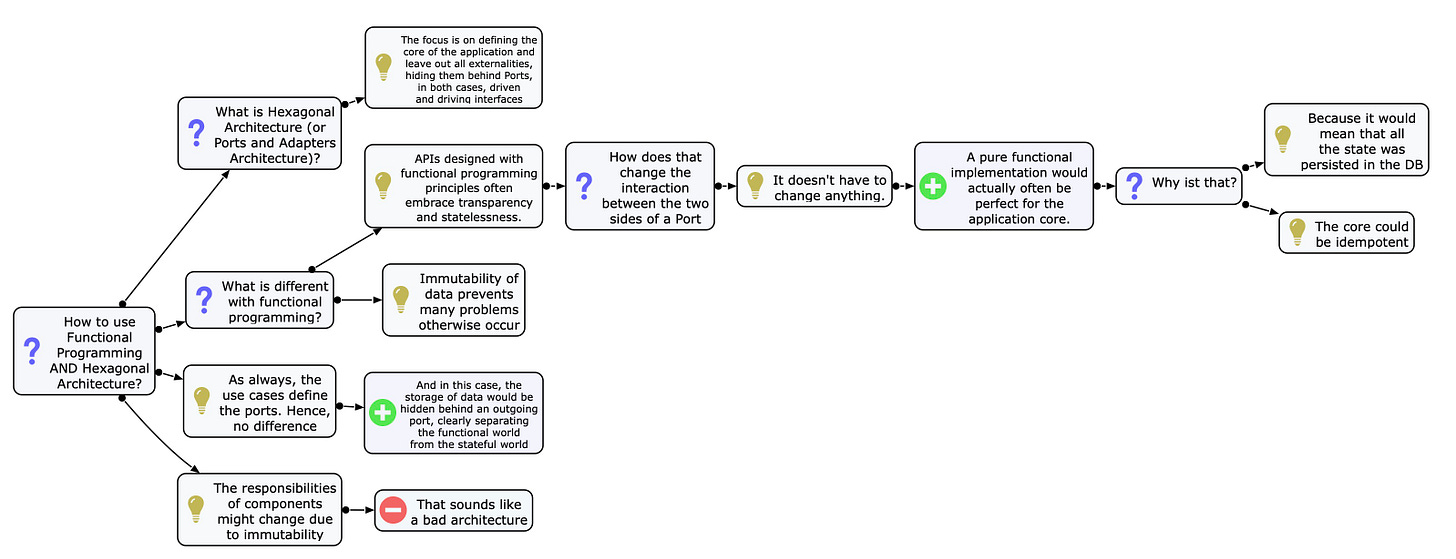The Unexpected Power of Questions and Diagrams
Don’t ponder, start mapping
This week, I found myself knee-deep in a tricky problem. I was trying to figure out how to combine two technical topics, let's call them A (it was “Hexagonal Architecture”) and B (“Functional Programming”), which felt about as compatible as oil and water. Stumped and frustrated, I decided to reach out to some folks on X who knew more about one of these topics. I wasn't expecting much, but to my surprise, one of them responded, offering his email and inviting more details about my conundrum. Actually, it was even the person first describing A.
Excited by this unexpected opportunity, I started drafting an email, but that's when the walls seemed to close in—I couldn’t clearly explain my problem. It was as if I was trying to juggle fog. I knew I had to make this exchange worthwhile, so I took a different approach. Instead of struggling to find the right words, I created an IBIS diagram to map out my thoughts—laying out the questions I had, the answers I considered, and the additional questions those spurred. Even the terminology in my original question got a second look. Slowly but surely, everything started making sense.
By the time I finished the diagram, I realised I’d solved my problem before even hitting "send.” When I did contact the expert, I was able to share my newfound understanding and the diagram itself. He took a look and agreed with my thinking. His feedback was encouraging, but what really stood out to me was how I’d reached clarity on my own.
From this experience, a couple of lessons stuck with me. First, the real power of communication came from asking the right questions, not just receiving answers. The expert asked for more details, which prompted me to refine my understanding. It would have been easy for him to just provide the answer. But he gave me much more. Second, the IBIS diagram once again turned out to be a great way to untangle seemingly complicated issues. It's straightforward and effective. And the visual overview of relevant and related questions allows to concentrate relevant thoughts and reach conclusions.
Next time I'm faced with a similar challenge, I'm going to start with an IBIS diagram much faster. It's a simple method that somehow slipped from my routine, but it’s definitely back on my radar now. This week wasn't just about solving a technical issue, but about rediscovering a practical method of working through problems on my own. In hindsight, it is as obvious as my problem I started with: “don’t ponder, start mapping!”
Did you try it yourself? It’s simple. See for example here.



